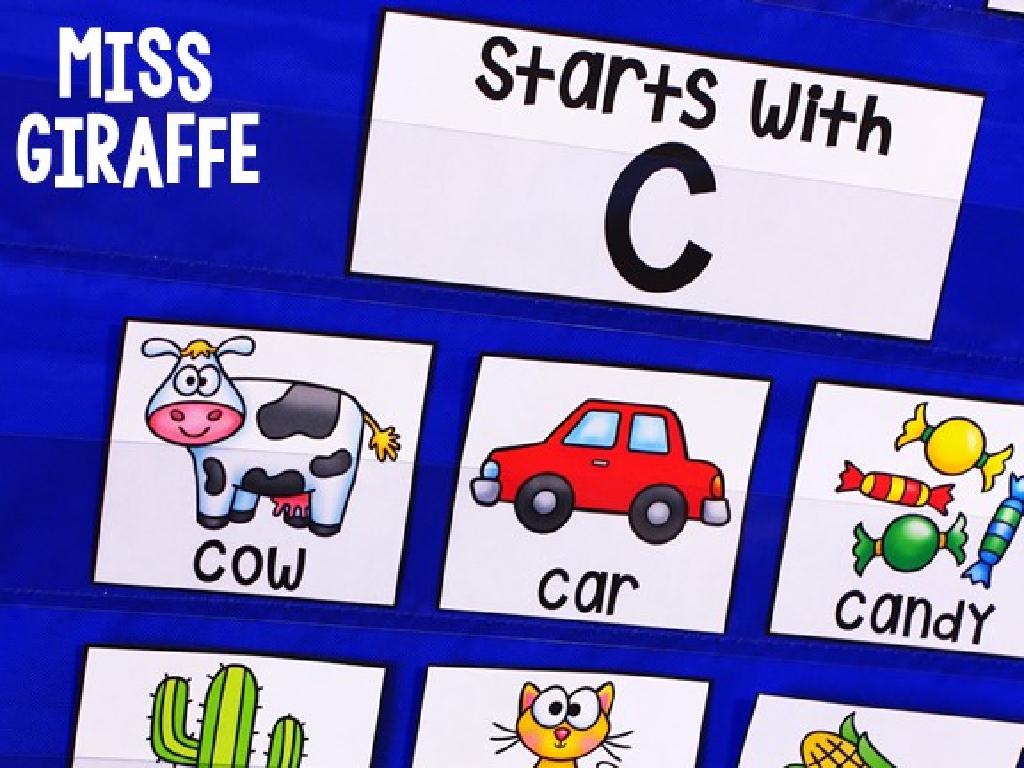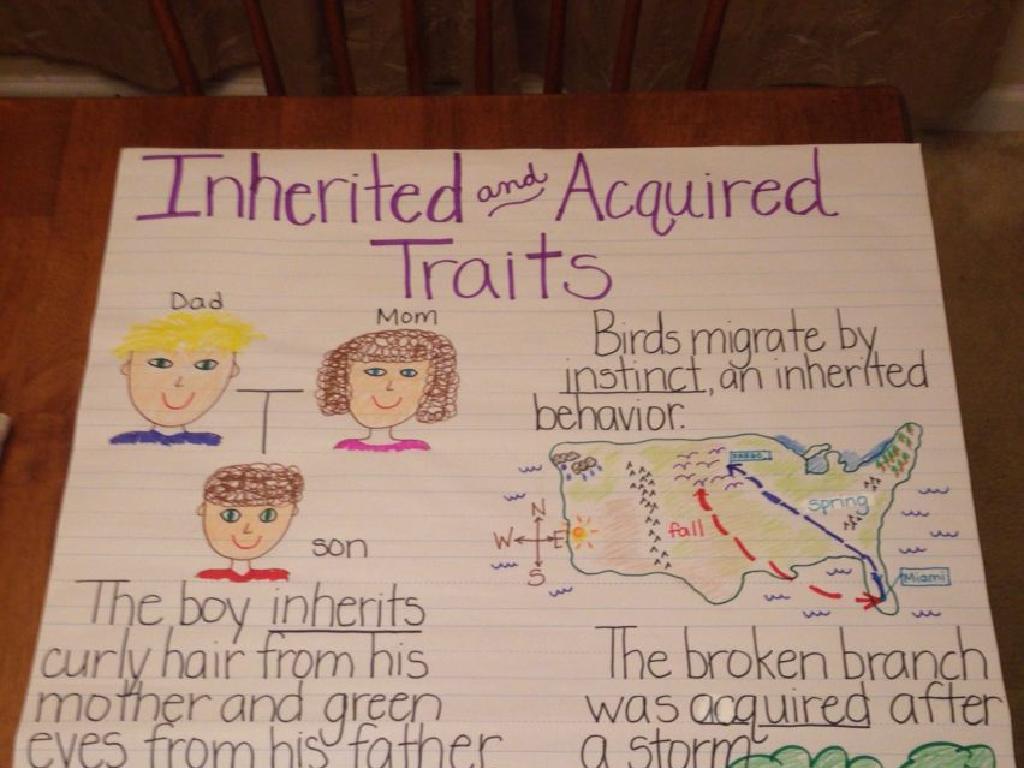Identify Parts Of The Engineering-Design Process
Subject: Science
Grade: Eighth grade
Topic: Engineering Practices
Please LOG IN to download the presentation. Access is available to registered users only.
View More Content
Understanding the Engineering-Design Process
– Define the engineering-design process
– A series of steps engineers use to solve problems.
– Explore engineering in daily life
– From smartphones to bridges, engineering shapes our world.
– Outline lesson objectives
– Today we’ll identify key parts of the design process.
– Engage with real-world applications
– We’ll see how these steps are used in creating everyday items.
|
This slide introduces students to the engineering-design process, which is a fundamental concept in understanding how engineers approach problem-solving. Emphasize the importance of engineering in everyday life by providing examples that students interact with regularly, such as technology and infrastructure. The lesson objectives should be clearly stated, ensuring students know what they will learn and why it’s relevant. Encourage students to think critically about how the design process is applied in the creation of familiar objects and systems they use every day. This will help them grasp the practical applications of the engineering-design process and its significance in innovation and development.
What is Engineering?
– Define engineering
– Application of science & math to solve problems
– Engineers’ societal role
– Engineers design, build, and maintain structures, machines, and systems
– Engineering in our world
– Bridges, smartphones, and water treatment
– Discuss engineering impact
|
This slide introduces students to the concept of engineering. Begin with a definition, explaining that engineering is the application of scientific and mathematical principles to design, build, and analyze objects and systems. Discuss the critical role engineers play in society, such as improving infrastructure, developing new technologies, and solving environmental issues. Provide tangible examples that students encounter in their daily lives, like the bridges they cross, the smartphones they use, and the processes that clean their drinking water. Emphasize how engineering touches almost every aspect of modern life and its importance in advancing society. Encourage students to think of other examples and consider the diverse fields within engineering.
The Engineering-Design Process
– Overview of the engineering-design process
– A systematic approach to solving engineering problems
– Steps: Ask, Imagine, Plan, Create, Improve
– Each step is crucial: Questioning, brainstorming, strategizing, executing, and enhancing
– Significance of the process steps
– Ensures structured and efficient problem resolution
– Application in problem-solving
– Teaches critical thinking and iterative improvement
|
Introduce the engineering-design process as a series of steps engineers use to come up with solutions to problems. Emphasize the importance of each step: ‘Ask’ to understand the problem, ‘Imagine’ to explore ideas, ‘Plan’ to organize thoughts and materials, ‘Create’ to turn plans into a tangible product, and ‘Improve’ to refine the solution. Highlight why following these steps is essential, as it provides a clear pathway to follow, which can lead to more effective and innovative solutions. Discuss how this process is not just for engineers, but can be applied to many areas of life to solve problems. Encourage students to think of examples where they have unknowingly used this process in their daily lives.
The Engineering Design Process: Step 1 – Ask
– Identify the problem or need
– What issue are we trying to solve?
– Conduct research on the problem
– Gather information to understand the issue fully
– Define constraints and criteria
– What limitations must the solution work within?
– Establish a clear goal for a solution
– What does success look like for this project?
|
This slide introduces the first step of the engineering design process, which is crucial for setting the stage for a successful project. Students should understand that identifying a clear problem or need is the foundation of the process. Encourage them to ask questions and think critically about the issue at hand. Research is essential to gain a deep understanding of the problem, which will inform the design process. Defining constraints and criteria helps to focus the project and ensure that the final solution is practical and meets the necessary requirements. Have students discuss potential problems they could address and what constraints they might face. This will prepare them for real-world engineering challenges.
Step 2: Imagine – Engineering Design Process
– Brainstorm solutions creatively
– Think of many ways to solve a problem, no idea is too wild.
– Encourage out-of-the-box thinking
– Don’t limit ideas; the wildest idea could be the best.
– Select promising ideas
– Choose ideas that seem most effective to investigate.
– Explore ideas further
|
This slide focuses on the ‘Imagine’ phase of the engineering-design process, where students are encouraged to brainstorm a variety of solutions to a given problem without judgment. Emphasize the importance of creativity and open-mindedness during this phase, as unconventional ideas can lead to innovative solutions. After generating a broad range of ideas, students should learn to evaluate and select the most promising ones based on criteria such as feasibility, cost, and time. These selected ideas will then be subject to further exploration and development. Encourage students to work collaboratively and respect all contributions. Provide examples of brainstorming sessions and how they can lead to selecting a viable solution.
Engineering Design Process: Planning
– Develop a clear action plan
– Outline steps to achieve the goal, like a recipe for success
– Create diagrams or models
– Visual aids that represent the solution, such as sketches or 3D models
– Plan resources and time
– Estimate materials, money, and hours needed to complete the project
– Importance of detailed planning
|
This slide focuses on the third step of the engineering design process: Planning. Students should understand the importance of creating a detailed plan before moving forward with a project. A clear action plan is like a roadmap, guiding the project from start to finish. Encourage students to think critically about what diagrams or models can help visualize their solution. Discuss the significance of planning resources, including materials and time, to ensure the project is feasible. Emphasize that thorough planning can save time and resources in the long run and is a critical step in the engineering design process. Provide examples of planning in engineering projects and encourage students to ask questions about the planning phase.
Engineering Design Process: Creation and Testing
– Transform plans into a prototype
– Use materials to build a model based on your design
– Conduct tests on the prototype
– Perform experiments to see if the prototype meets the design goals
– Record the building process
– Keep a detailed log of construction steps and challenges
– Reflect on the creation and testing
– Analyze the outcomes and think about improvements
|
This slide focuses on the ‘Create’ step of the engineering design process, where students turn their design plans into a physical prototype. Emphasize the importance of this hands-on experience in understanding the practical aspects of design. Encourage students to test their prototypes rigorously and to document each step of their construction process, which is crucial for troubleshooting and refining their designs. After testing, students should reflect on the performance of their prototype and consider any necessary modifications. This iterative process is key to successful engineering and helps students learn from their successes and failures.
Step 5: Improve – Engineering Design Process
– Evaluate the prototype’s performance
– Assess how well the prototype meets the design criteria and functions
– Identify areas for improvement
– Determine which aspects of the prototype could be enhanced
– Make modifications
– Apply changes to the design based on the evaluation
– Retest the prototype
– Conduct tests on the updated prototype to ensure improvements are effective
|
This slide focuses on the ‘Improve’ step of the engineering design process, where students learn the importance of iteration. After creating a prototype, students should evaluate its performance against the criteria and objectives set at the beginning of the project. They should identify any shortcomings or areas where the prototype can be enhanced. Based on these findings, modifications should be made to the design. It’s crucial to retest the prototype after each set of changes to verify that the improvements have had the desired effect. Encourage students to understand that this iterative process is essential for refining a design and is a normal part of the engineering workflow.
Engineering Success: Case Study
– Overview of a successful project
– Example: The construction of a pedestrian bridge
– Engineering-design process application
– How each step of the design process was crucial
– Significance of each process step
– From problem definition to testing and iteration
– Impact on project outcome
– The project’s success hinged on meticulous design and execution
|
This slide aims to provide students with a concrete example of how the engineering-design process leads to successful outcomes. By examining a real-world case study, such as the construction of a pedestrian bridge, students can see the practical application of each step in the process. Discuss how the engineers defined the problem, researched, brainstormed solutions, built prototypes, tested, and iterated their designs. Emphasize the importance of each step and how skipping any part could have led to a less successful result. Encourage students to think critically about how this process is applicable to their own projects and the broader field of engineering.
Class Activity: Engineering Design Challenge
– Form small engineering teams
– Understand & apply design steps
– Define the problem, brainstorm, plan, prototype, test, and improve
– Develop a solution to a problem
– Use creativity and critical thinking to solve the problem
– Present your solution to the class
|
This class activity is aimed at providing hands-on experience with the engineering-design process. Divide the class into small groups and assign a simple, age-appropriate engineering problem for them to solve. Guide them to apply the steps of the engineering-design process: defining the problem, brainstorming possible solutions, planning their chosen solution, creating a prototype, testing, and making necessary improvements. Encourage collaboration and critical thinking. Each group will present their solution and the steps they took to reach it, allowing students to learn from each other’s approaches. Possible activities: building a bridge from paper, designing a simple water filter, or creating a device to help organize school supplies.
Engineering-Design Process: Wrap-Up
– Review key engineering-design steps
– Reflect on class activity learnings
– Discuss how the activity illustrated the design process
– Engage in Q&A for clarity
– Encourage questions to address uncertainties
– Summarize the session’s insights
|
As we conclude, revisit the main stages of the engineering-design process to reinforce learning. Reflect on the class activity, emphasizing how it exemplified each step of the process. Open the floor for a Q&A session, encouraging students to ask questions to clear up any confusion. This is also an opportunity to assess understanding and correct misconceptions. Summarize the key takeaways from today’s lesson, ensuring students leave with a solid grasp of the engineering-design process. Consider providing a handout with the process steps for students to take home.





